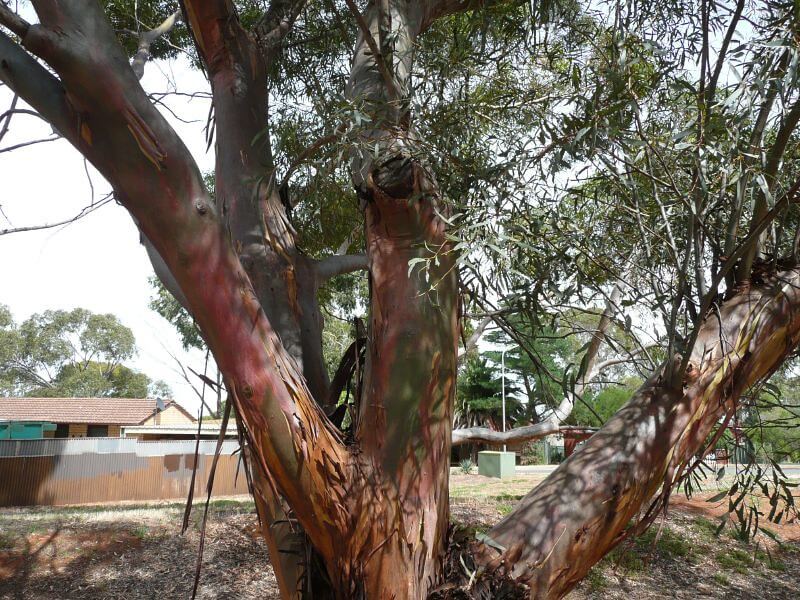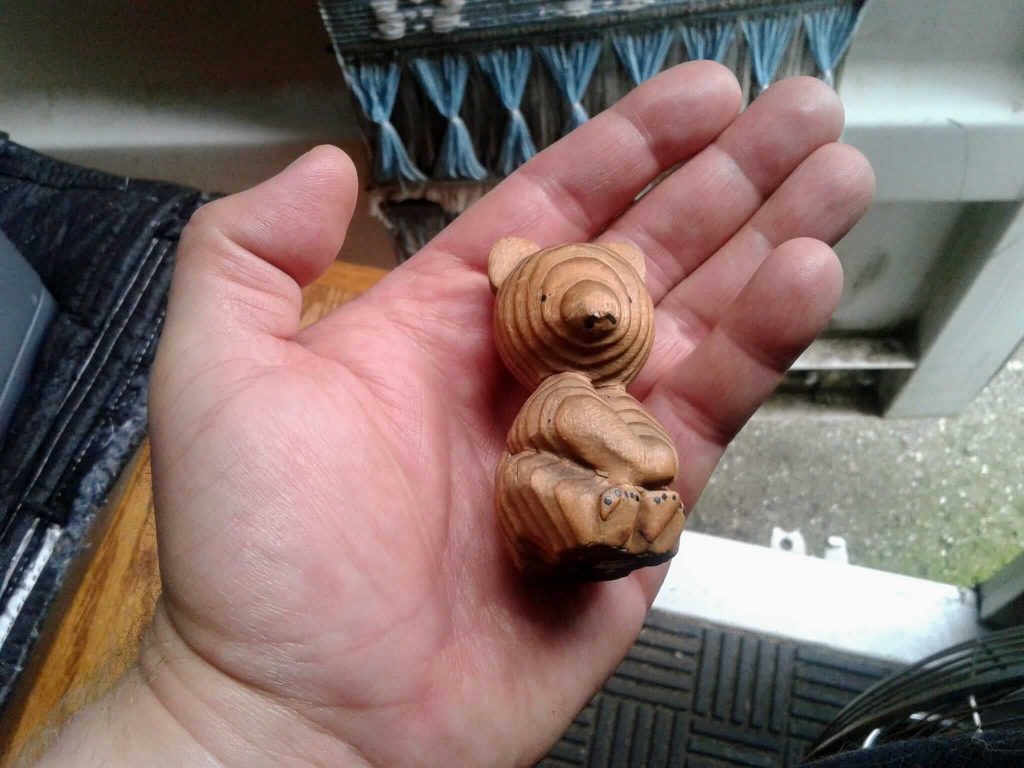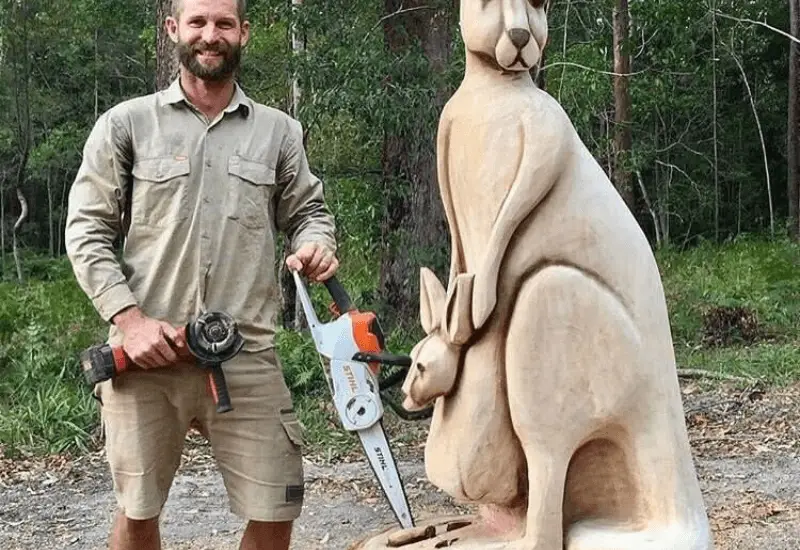Eucalyptus, a widely found wood in various regions across the globe, presents a compelling opportunity for carving enthusiasts. If you’re fortunate enough to acquire eucalyptus logs or boards, you might be curious about its carving potential. The simple answer is yes, you can carve eucalyptus, just like many other tree species. However, what sets eucalyptus wood apart and makes it intriguing for carving? Let’s uncover the secret behind the art of carving eucalyptus.
What is Eucalyptus
Eucalyptus has a special status in its native land: It’s harvested more than any other Australian timber. Eucalyptus is used locally in Australia for projects with a maritime theme: shipbuilding and marine structures like dock pilings & harbor work and bridge-building.

Eucalyptus requires careful drying, due to its tendency to twist and warp. Gum pockets or veins are a common defect that can make it difficult to work. The heartwood of eucalyptus is dark brownish red and is often marked with short, brown radial flecks on the end grain and boat-shaped flecks on the flat-sawn surfaces.
Fungus is the cause of these flecks, which enhance the wood’s decorative value. The grain is straight to irregular, often wavy with a coarse texture. Eucalyptus is heavy and of medium strength. It is used for furniture, boatbuilding, marine construction, tool handles, and cabinetwork and is sliced into decorative veneer.
How long does eucalyptus wood take to dry?
The drying time for eucalyptus wood can vary depending on various factors such as the thickness of the wood, the specific species of eucalyptus, the environmental conditions, and the drying method employed. On average, eucalyptus wood takes around 6 to 12 months to air dry. Thicker pieces or logs may take even longer. It’s important to note that proper drying is crucial to prevent warping, cracking, or other issues in the wood.
Tips for carving Eucalyptus
Correct seasoning of your wood to avoid splitting, twisting, and warping
Most problems associated with eucalyptus will be related to seasoning. Eucalyptus tends to lose a lot of its moisture content as soon as it is cut. Proper seasoning techniques ensure this does not happen and therefore the wood does not develop splits and checks majorly.
Slow-drying eucalyptus also ensures that the boards do not warp and twist as it dries. If you received your eucalyptus wood already seasoned make sure to store it well.
Seasoned eucalyptus has quite easy-to-note characteristics, it’s very hard! To mitigate this problem you can either choose to rough out or carve entirely while the wood is green or adjust your tools to cope with the wood resistance. Let’s look at both options in detail below.
Carving Eucalyptus green
Carving eucalyptus green greatly eases the hardship of cutting into it while dry. While carving green is easy seasoning the carved piece and then finishing it after it’s dry without getting splits is quite hard.
This method works well on small pieces and in fact, whittling or using whittling knives is only also possible with green eucalyptus. Dry eucalyptus is not as ideal for whittling and can be actually very dangerous if the carver is not careful.

Another way you can eucalyptus the softness of green eucalyptus is by doing all the roughing out while the wood is green. The details can be worked on later after the roughed-out piece has completely dried. This saves you a lot of energy and time.
Should you decide to carve or rough out your eucalyptus while green make sure to season it well and very slowly. When I tried this method I would wrap up the piece for almost two months to take the moisture content all the way from 18 to about 13%. You can easily read moisture content with a moisture meter.
Adjusting Tools to cope with dry eucalyptus
The only way to beat the tough eucalyptus wood is with sharp tools. Many carvers undermine the power of sharp tools and many more are afraid of sharpening their tools by themselves regularly. Sharpening is a part of woodcarving.
Sharpening lessens the load quite immensely. For woods that are as tough as eucalyptus, it’s always advised to keep a sharp edge.
If you are starting with a sharp edge then you know what peak performance feels like from the start. Any time you feel that you’re far from that peak performance, then it’s time to sharpen your tools again. Most often it may be every 15 to 20 minutes.
The bevel set of the tools is also vital. While a low angle is best for green eucalyptus a more steep angle for dry eucalyptus is ideal. Why? Because the steep bevel angle buttresses behind the cutting edge hence making the cutting edge last longer battling the tough eucalyptus grain.
Power Tools
Another way to carve eucalyptus easily is by the use of power tools. Powertools rotates the blades much faster increasing the ease of cutting hard and tough woods like eucalyptus.
When it comes to power tools there’s a wide array you could choose from a wood lathe, (is it a power tool though?) Chainsaws, Rotary tools, and die grinders.
The point to remember is that seasoning is paramount and does not change when we switch to power tools. If the piece is carved green it still needs to be set in a slow drying process. If it was already seasoned then it’s time to finish it.
Finishing your eucalyptus carving
Once all the carving is done despite the challenges you may have faced to reach the final step, you can finally add a layer of your befitting finish.

But does eucalyptus need finishing?
Of course, they do! Despite its natural decay resistance tendency this wood needs to be protected. Indoor and very small carvings may necessarily not require finishing but outdoor carvings and sculpture will surely do.
You can use any of the available finishes that fit your theme but make sure it does at least the following;
- offers protection from moisture exchange that causes eucalyptus twists and split
- offers protection from UV that causes eucalyptus greying and degradation
- Gives the sheen, color, and appearance you are going for
Conclusion: can you carve eucalyptus wood?
Carving eucalyptus is indeed a popular practice embraced by artisans worldwide. While it is possible to carve your eucalyptus wood, it’s important to acknowledge that this particular wood presents unique challenges. Working with eucalyptus requires patience, skill, and the appropriate tools for the task. We hope that the tips and secrets we have shared for carving eucalyptus have provided valuable insights, enabling you to embark on a fulfilling carving journey. Happy carving!

